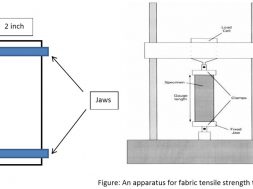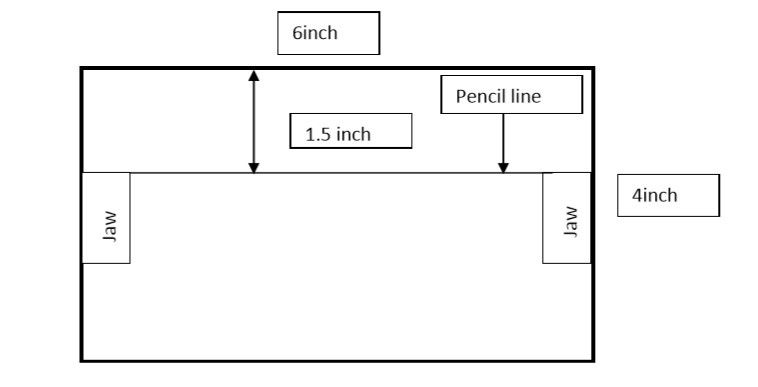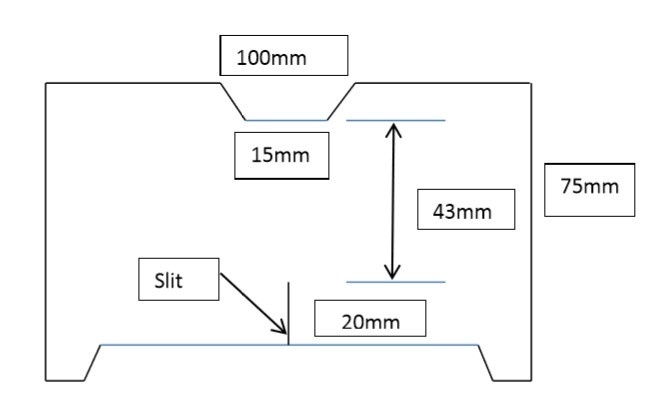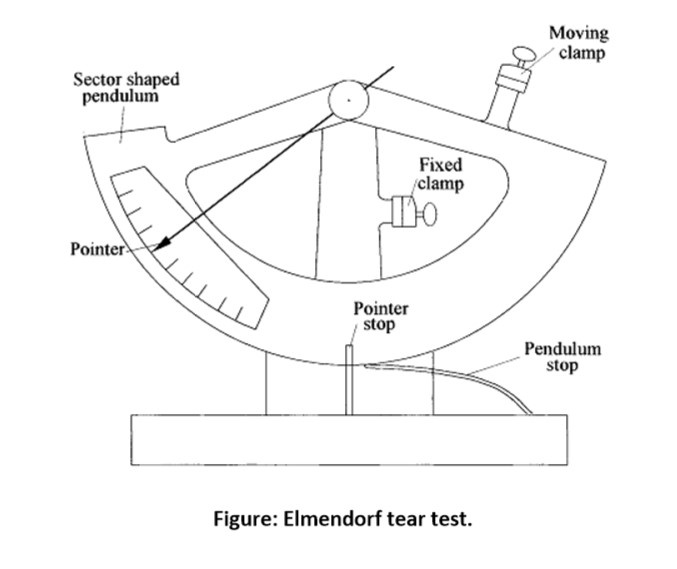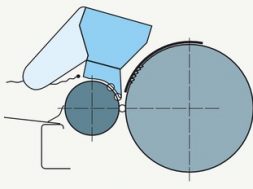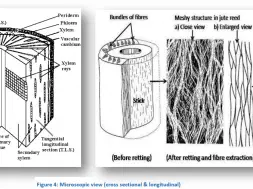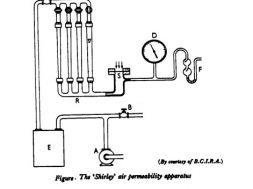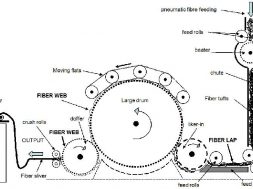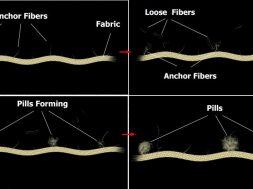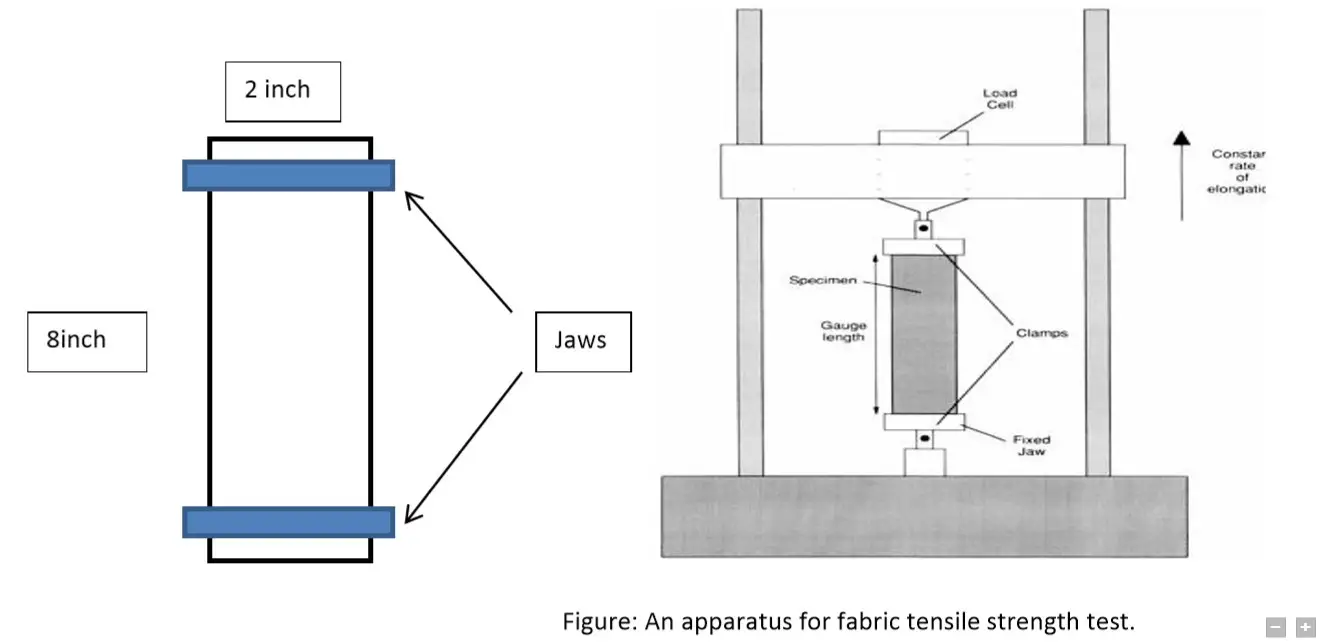
Fabric Tensile Strength Test | Strip Strength Test | Grab strength test | Tearing strength test | Elmendorf Tear Test | Bursting strength
Fabric Tensile Strength Test Methods
Tensile Strength Testing: This is referred to as a strength test where the load is applied along the direction of the test sample.
Tensile strength test of fabric is divided into two groups-
- Strip test
- Grab test.
Strip Strength Test:
- Five fabric samples are extended in a direction parallel to the warp and five parallel to the weft.
- The specimens are cut to a size of 2.5 inch in width and then removing threads from both edges until the width has been reduced to 2 inch.
- The test length should be 8 inch between the jaws and so enough extra length must be allowed for gripping in the jaws.
- Under optimum conditions, the specimen will be mounted centrally. Security gripped along the full width to prevent slipping.
- The load is applied uniformly across the full specimen width till the specimen tear out.
- If a test specimen breaks within 0.25 inch of the line of contact of either of the pairs of jaws at a load less than the average of normal breaks, the result should not be used in calculation.
Grab Strength Test:
- At first we take specimen 4”x6”.
- Then the specimen is marked by a pencil at 1.5“from the edge of the specimen to assist in clamping it so that the same set of threads are clamped in both jaws.
- The two jaws are fixed on both side of the specimen from 1” edge. This means that only the central 1 inch of the fabric is stressed.
- The gauge length used is 3 inch and the speed is adjusted so that the sample is broken in 20 ± 3s.
- One jaw is fixed another jaws moveable.
- Then the moveable jaws start to move outwards till the specimen is tear out.
Tearing Strength Test:
Tear Strength : Tear strength is the force required either to start or to continue the tear in a fabric under specific condition.
Tearing Force : Tearing force is the average force required to continue a tear previously started in a fabric.
Tearing Resistance : Tearing resistance is one of the important properties of a textile fabric. The tear resistance of a fabric indicates its resistance to tearing force.
Three Types of Tear Test :
- The tongue
- Trapezoid
- Elmendorf
Elmendorf Tear Test :
Sample Preparation:
- At first we take specimen (100X 75) mm2.
- The template is placed on the specimen & cut according to the template as fig.
- A slit is created at the middle point at the specimen which range is 20 mm.
- In the test the Elmendorf continuous to tear the fabric from the end of the slit to the opposite edge a distance of 43 mm.
- Pendulum lever principle is used here.
Working Procedure :
- The apparatus consists of a sector-shaped pendulum carrying a moving sample clamp and the other clamp is fixed on the frame.
- When the pendulum is in the raised starting position, the specimen is fastened between the two clamps.
- The tear is started by a slit cut in the specimen between the clamps.
- The pendulum is then released and the specimen is torn as the moving clamp moves away from the fixed one.
- The pointer attached to the pendulum which is graduated to read the tearing force directly.
Bursting strength : This tear strength is basically used for knitted, lace, non-woven fabric, parachute fabrics, filters, sacks and nets etc. It is the uniformly distributed force over a given area applied to the fabric surface which is needed to break.
There are mainly two types of bursting strength test-
- Hydraulic or Diaphragm burst
- Ball burst
1. Hydraulic Bursting Tester:
Procedure:
- The pressure in a liquid is exerted in all directions and advantage is taken of this phenomenon in the hydraulic bursting tester.
- The specimen S is clamped by a ring over a thin flexible rubber diaphragm D, which is clamped over a circular hole in the upper face of a reservoir.
- The liquid used may be water or glycerin.
- The hydraulic pressure is increased, by valves or screw driven piston and the diaphragm distends taking with it the specimen.
- At some point the fabric bursts, the pressure being indicated by the gauge G.
- Since the rubber diaphragm requires a certain pressure to stretch it, corrections may be made either by doing a blank test i.e. noting the pressure required to distend the diaphragm the same amount without the presence of fabric
More Testing Article : Air Permeability by Shirley Air Permeability Apparatus
Ref. Book-
- J.E. Booth
(12934)
